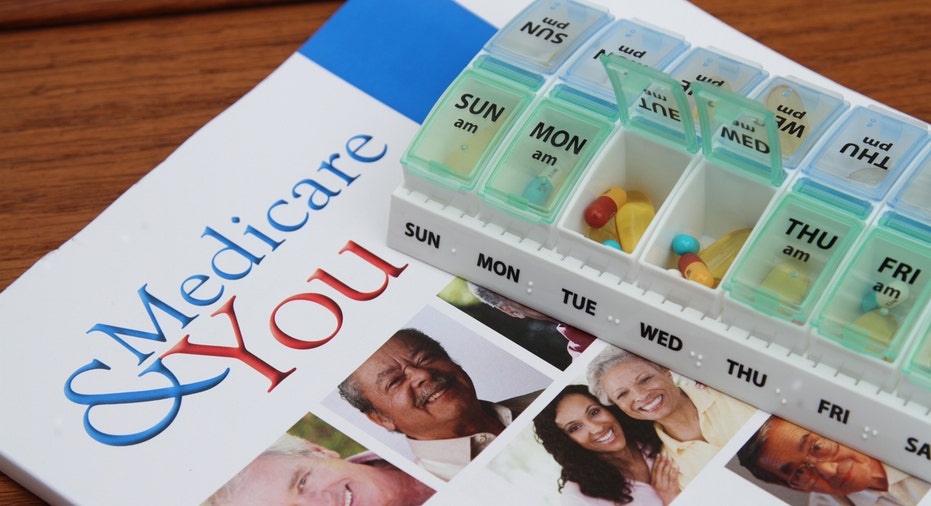4 important decisions to make before enrolling in Medicare

The period starting three months before your 65th birthday, continuing throughout the month during which your birthday occurs, and ending three months after that, is your initial Medicare open-enrollment window. Miss that opportunity to enroll and you could end up paying for your tardiness in higher premiums. So before you even reach the open-enrollment period, it's a good idea to know exactly what you're going to do about the many important decisions involved in signing up for Medicare.
Original Medicare or Medicare Advantage?
The numerous types of Medicare plans fall under two primary programs. Original Medicare, which consists of Medicare Part A and Medicare Part B, covers hospital related expenses and some non-hospital healthcare expenses, including certain types of medical appointments, medical supplies, and outpatient care. These plans are provided by the federal government and allow you to use any healthcare provider that accepts Medicare.
Medicare Advantage is a program that offers you various insurance plans from private providers, generally consisting of a mix of HMOs, PPOs, and possibly hybrid plans such as EPOs. Most of these plans charge a monthly premium over and above the basic Part B premium, and they may offer a very wide range of coverage options.
It's important to make the right choice between original Medicare and Medicare Advantage at the time you enroll because you may lose access to some options after open enrollment ends. For example, during your initial open-enrollment period, Medicare Advantage plans are not allowed to decline coverage -- but after that, the plan providers may decline to cover you for a variety of reasons.
Will you need a Medigap plan?
If you decide to go with original Medicare, consider supplementing the rather sparse basic coverage with a Medigap plan. Medigap plans, which are sold by private plan providers, can give you coverage for healthcare expenses that don't fall under Medicare Part A or Part B. If you do decide to get a Medigap plan, the next decision will be which type of plan to get. The plans come in 10 different options and are standardized, meaning that (for example) every Medigap Plan L offers exactly the same coverage no matter where you live or which private provider is selling the plan.
Will you need Medicare Part D?
Medicare Part D provides prescription drug coverage, which you may or may not need depending on what other Medicare plans you choose. Neither original Medicare nor Medigap offers prescription drug coverage, so if you go that route, choosing a Part D plan is strongly recommended. Even if you're in good health now, you may still end up with expensive prescription requirements as you get older, and without an insurance policy to help prescription expenses can get very high very quickly. Some Medicare Advantage plans offer drug coverage as part of the basic plan, while others do not. If the Medicare advantage plan you choose has sufficient drug coverage for your needs, you can skip Part D.
High premium/high coverage, or low premium/low coverage?
"You get what you pay for" definitely applies when it comes to health insurance. When comparing the different Medigap plans and/or the different Medicare Advantage plans, you'll quickly see that plans that provide more coverage nearly always have much higher premiums than plans that provide less coverage. Thus, you'll have to decide whether it makes more sense to pay high premiums for a plan that will cover a larger percentage of your medical expenses, or lower premiums for a lower-coverage plan.
If you're in good health, you'll usually save more by adopting a cheaper plan, since you're likely to have fairly low medical expenses. If you have one or more serious medical conditions, choosing a high premium plan is generally the cheapest option in the end, since you're likely to rack up fairly high medical expenses over the course of the year.
However, note that if you choose to go the Medigap route and later wish to switch to a different Medigap plan, once you're outside your initial enrollment period, the new plan provider has the right to decline coverage or charge you higher premiums based on pre-existing conditions. Thus, it may make sense to choose a fairly high-coverage Medigap plan from the beginning, even if you're in good health. "Better safe than sorry" is another truism that can easily apply to healthcare, especially in retirement.
The $16,122 Social Security bonus most retirees completely overlook If you're like most Americans, you're a few years (or more) behind on your retirement savings. But a handful of little-known "Social Security secrets" could help ensure a boost in your retirement income. For example: one easy trick could pay you as much as $16,122 more... each year! Once you learn how to maximize your Social Security benefits, we think you could retire confidently with the peace of mind we're all after. Simply click here to discover how to learn more about these strategies.
The Motley Fool has a disclosure policy.